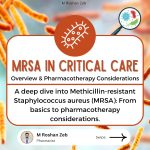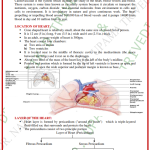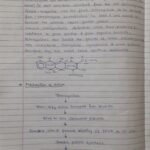1
GENERIC
SUBSTITUTION
1st M Pharmaceutics
www.DuloMix.com
2
INTRODUCTION
• A generic drug is defined as “a drug product that is
comparable to brand/innovator drug in dosage
form, strength, route of administration, quality and
performance characteristics, and intended use”.
• It should contain the same active ingredients as the
original formulation.
• According to the FDA, generic drugs are identical
or within an acceptable bioequivalent range to
the brand-name counterpart with respect to
pharmacokinetic and pharmacodynamics
properties.
www.DuloMix.com
3
WHEN GENERIC DRUG
MARKETED
• After patent and exclusivity protection end
• Patent owner waives its rights
• FDA requirements are met
www.DuloMix.com
4
APPROVAL
PROCESS
FOR
GENERIC
DRUGS
www.DuloMix.com
5
MEANING
• Generic substitution is the term applied to the
substitution of a prescribed branded drug by a
different form of the same active substance.
• The generic is usually unbranded; it is often a parallel
product, which is regarded as ‘essentially similar’ by
the respective national commission. [USFDA, EU, PCI]
• Generic substitution becomes possible when the
patent life of the active substance has expired.
• Marketing authorization of each formulation of a
generic medicine is dependent on demonstration of
bioequivalence to a reference, often the branded
wpwwr.DoulodMiux.ccomt.
6
POTENTIAL BENEFITS OF GENERICS
Better access to needed medicines.
Well chosen generics make government or household
spend less without loss of quality or safety
Impact on the price of non-generics through
competition:
generics may be the only way to bring price competition
to a market that is based on product differentiation,
patent protection and heavy brand promotion to both
prescribers and patients access to needed medicines.
www.DuloMix.com
7
REQUIREMENTS FOR ABRIDGED MARKETING
AUTHORIZATION APPLICATION (I.E. WITHOUT
PRE-CLINICAL AND CLINICAL DATA)
• product information previously approved,
• active ingredient previously approved,
• route of administration, strength and dosage form
equal to those of previously approved product,
• adequate information on analytical methods,
manufacturing process, manufacturers of finished
product and starting materials,
• stability studies,
• proof of therapeutic equivalence with previously
approved product.
www.DuloMix.com
8
www.DuloMix.com
9
EQUIVALENCE
Pharmaceutical equivalents:
Products that contain the same amount of the same
active substance(s) in the same dosage form; meet the
same or comparable standards; are intended to be
administered by the same route.
Pharmaceutical equivalence does not necessarily imply
therapeutic equivalence as differences in excipients
and/or manufacturing process can lead to differences in
product performance.
www.DuloMix.com
10
BIOEQUIVALENCE
• Compare two formulations to determine whether they
provide substantially the same amount of active
substance at a comparable rate.
It is applied for authorizing :
– ‘scaling up’
– post-approval changes
– Generics
www.DuloMix.com
11
A GENERIC DRUG IS CONSIDERED
TO BE BIOEQUIVALENT TO THE
BRAND NAME DRUG IF :
• The rate and extent of
absorption do not show a
significant difference from
the innovator drug , or
• The extent of absorption
does not show a significant
difference and any
difference in rate in
intentional or not medically
significant .
www.DuloMix.com
12
• The approval of branded products, the approval
process for generic products requires submission of
an ANDA to the FDA.
• The application is abbreviated partly because
generic drug manufacturers are not required to
conduct preclinical and clinical studies to establish
safety and effectiveness.
• Evidence of bioequivalence to the branded
product must be provided.
• For most oral tablet or capsule dosage forms,
bioequivalence is demonstrated in vivo by
comparing the concentrations of the branded and
generic products in blood, plasma, serum, or other
biologic fluid over time.
• Bioequivalence studies are typically conducted in
24 to 36 healthy volunteers.
www.DuloMix.com
13
• The 2 pharmacokinetic parameters of interest are
maximum drug concentration (Cmax), an indirect
measure of the rate of absorption, and the area
under the plasma concentration time curve (AUC),
which displays the extent of drug absorption.
• Bioequivalence between 2 products is established
when the 90% confidence intervals for the
generic/brand Cmax and AUC ratios lie within the
boundaries of 80% to 125%.
www.DuloMix.com
14
CLINICAL RESEARCH FOR
GENERIC DRUGS
• To demonstrate that the generic medicine is
comparable to the reference medicine so that it
can receive a marketing authorisation.
• To show that the generic medicine produces the
same levels of the active substance in the body as
the reference medicine.
• Bioequivalence studies to assure the therapeutic
equivalence.
• If a generic medicine contains a different salt of
the active substance to the salt used in the
reference medicine .
www.DuloMix.com
15
CLINICAL SIGNIFICANCE
• Clinical interpretation is important in evaluating the
results of a bioequivalence study.
• Differences of less than 20% in AUC & Cmax between
drug products are unlikely to be clinically significant in
patients.
• A small, statistically significant difference if the study
well controlled & the number of subjects is sufficiently
large. Above MEC & do not reach the MTC.
• Elderly or patients.
• Normal healthy volunteers.
• Minimize product to product variability by different
manufactures & lot to lot variability with a single
manufacture.
www.DuloMix.com
16
CONCLUSION
• After the expiry of patent or marketing rights of the
patent drug, generic drugs are marketed. They are
comparable to brand drug in dosage form,
strength, route of administration, quality and
performance characteristics, and intended use.
• Generic drugs are available at affordable prices
with maintaining quality. These ‘Generic’
formulations balance public interest as critical
disease like cancer, AIDS etc.
• India’s Pharmaceutical market grew at 9.5% in the
year 2015.
www.DuloMix.com
17
REFERENCES
• www.ijpcbs.com/files/2106-22.pdf
• pharmaceuticals.gov.in/generic.pdf
• www.pharmacophorejournal.com/November-
December2011-article1.pdf
• https://www.in.kpmg.com/pdf/Indian%20Pharma
%20Outlook.pdf
• http://www.indiabioscience.org/articles/compuls ory-
licensing-%E2%80%93-does-it-affect- pharma-companies
www.DuloMix.com
18
Thank you
www.DuloMix.com










